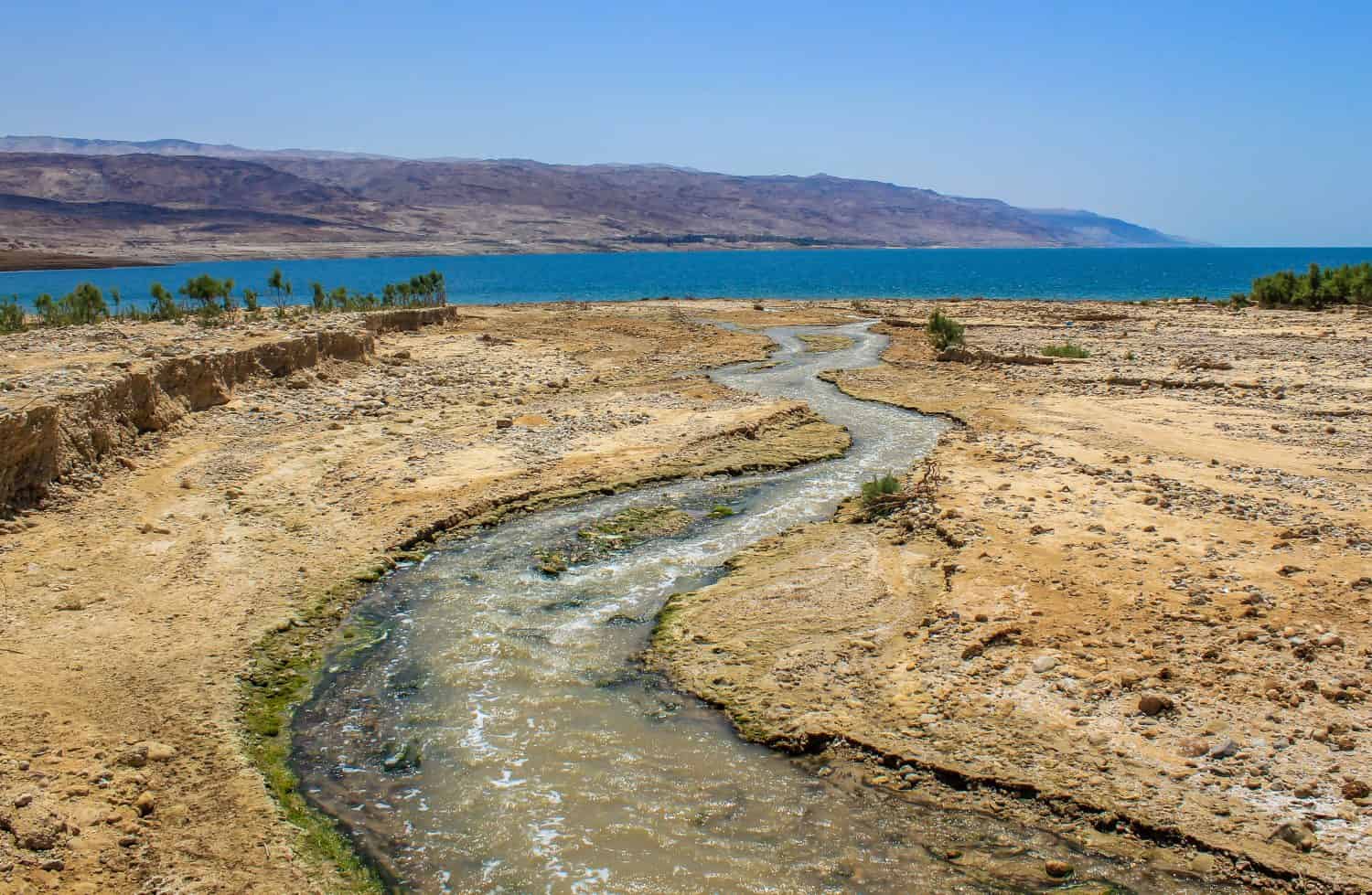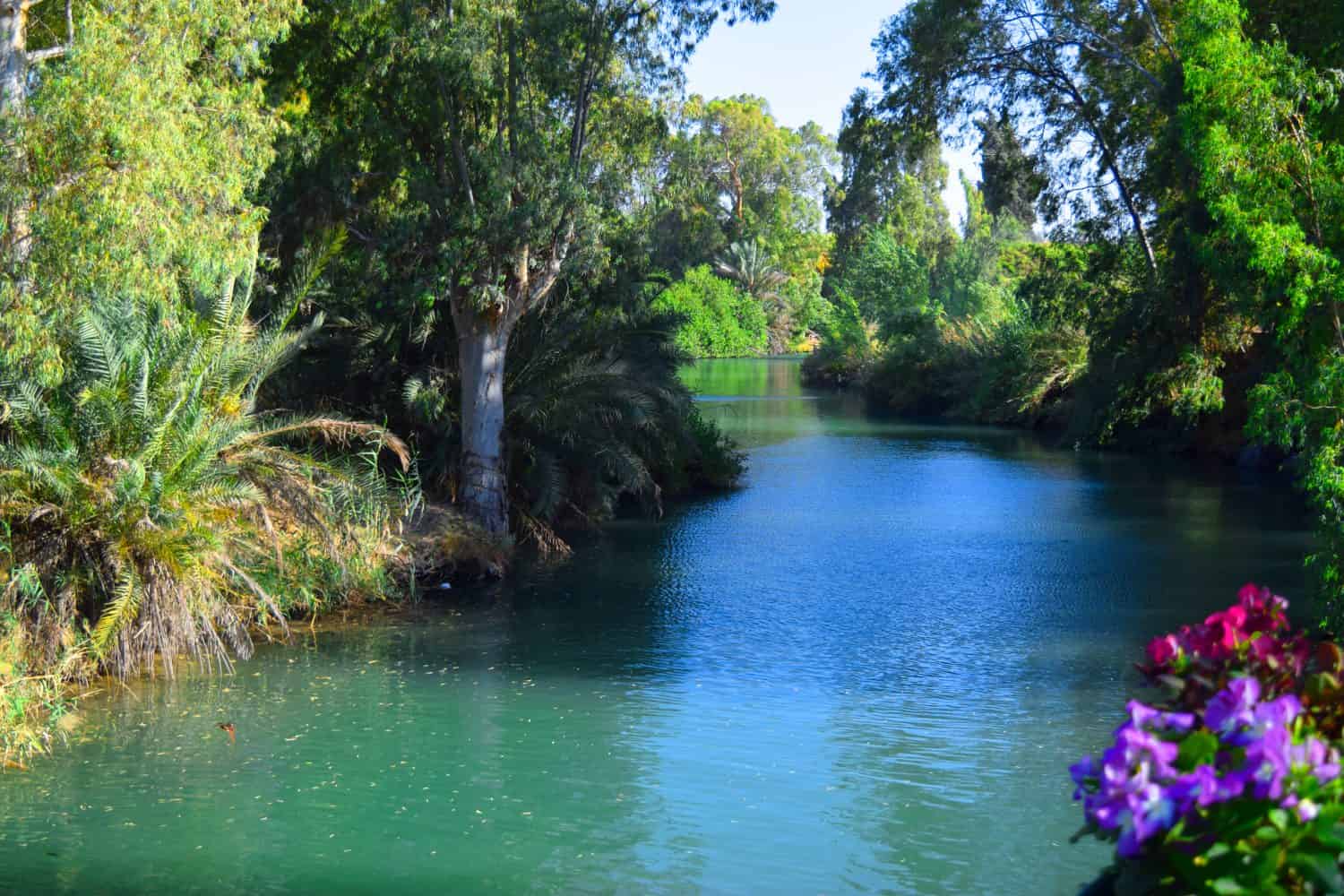
The Jordan River features two baptismal sites.
©iStock.com/RobertHoetink
Overview of the Jordan River
The Jordan River lies between the countries of Jordan and Israel. The river also borders Syria, Lebanon, and the Israeli-occupied West Bank. The river flows into the Dead Sea, which claims the lowest elevation on Earth. Additionally, the river claims the lowest elevation of any river globally and stretches an incredible 223 miles long.
The river represents more than a water source in this region of the world. The Jordan River has signified life, stability, and growth for its surrounding nations for millennia. It also was the site of many events important to Abrahamic religions, such as Islam, Judaism, and Christianity. For example, the Christian Bible details the baptism of Jesus Christ by John the Baptist in this famous river, making it a sacred place for many believers.

The Jordan River flows into the Dead Sea.
©Christopher Sprake/Shutterstock.com
Overview of Drought and Climate Change in the Middle East
Climate change has threatened the Middle East for years, and the region is currently experiencing devastating effects. Temperatures in the Middle East have risen faster and higher than those in other geographical locations due to climate change. Experts estimate that temperatures in this region rise two to seven times faster than the global average.
Temperature increases due to climate change may result in lessened precipitation, negatively affecting water supply and agriculture. While the Middle East already claims 12 of the world’s 17 water-stressed countries, the region may experience an even more severe water shortage within the next few decades. Water shortages primarily impact farmers, who cannot irrigate their crops and grow food without water, resulting in a subsequent food shortage.
As natural resources dwindle, nations in the Middle East may face conflict with neighboring countries over resource availability. Thus, conflicts already present in the region could worsen due to climate change. Already, Turkey has significantly cut the flow of water to Iraq through the Euphrates River, as Turkey controls over 90% of the water in the Euphrates. Overall, drought and climate change in the Middle East signify more than resource shortages; it could mean conflict, starvation, and even war.

Climate change is a major factor affecting water levels in the Jordan River.
©Maurizio De Mattei/Shutterstock.com
How Much Water has the Jordan River Lost?
The Jordan River loses water daily due to drought and climate change, but these aren’t the only factors affecting its water levels. Pollution and water diversions also threaten the river. Water diversions for irrigation and other purposes are mainly driven by conflict in the Middle East. Such conflicts historically include the six-day war between Israel and Jordan in 1967 and Syria’s civil war in 2011.
As the border between West Bank and Jordan, the river is often caught in the Israeli-Palestine conflict. Therefore, opponents may divert water from the river to deprive their enemy of resources. In fact, Palestinians cannot access the Jordan River’s water whatsoever. Once a symbol of life and stability, the dry riverbed reminds Palestinians and Israelis alike of the consequences of the ongoing conflict in the region.
Israel has claimed around half of the water in the river, while Syria and Jordan have diverted the remainder. Water diversion results in low water levels and the slow drying up of the river. While the river once deposited around 1.3 billion cubic meters of water into the Dead Sea annually, it now deposits between 20 and 200 million cubic meters.

Diverting water from the Jordan River increases conflict between Middle Eastern countries.
©Christopher Sprake/Shutterstock.com
Is the Jordan River Drying Up in 2024?
Due to the combined factors of climate change, drought, and ongoing conflict in the Middle East, it’s possible that the Jordan River could dry up in 2024. If countries in the region continue to pollute and divert water away from neighboring nations, water levels in the river will fall significantly.
However, the Jordan River may be saved from drying up if conflict in the Middle East subsides. Additionally, policies around environmental stability would need to be altered to account for climate change’s impact on water supply in the region. Although the future of the Jordan is unclear, it is likely to completely dry up in the next few years if remedial steps are not taken.

It’s possible that the Jordan River could dry up in the next few years.
©SoloTanja/Shutterstock.com
The photo featured at the top of this post is © iStock.com/dnaveh
Thank you for reading! Have some feedback for us? Contact the AZ Animals editorial team.







